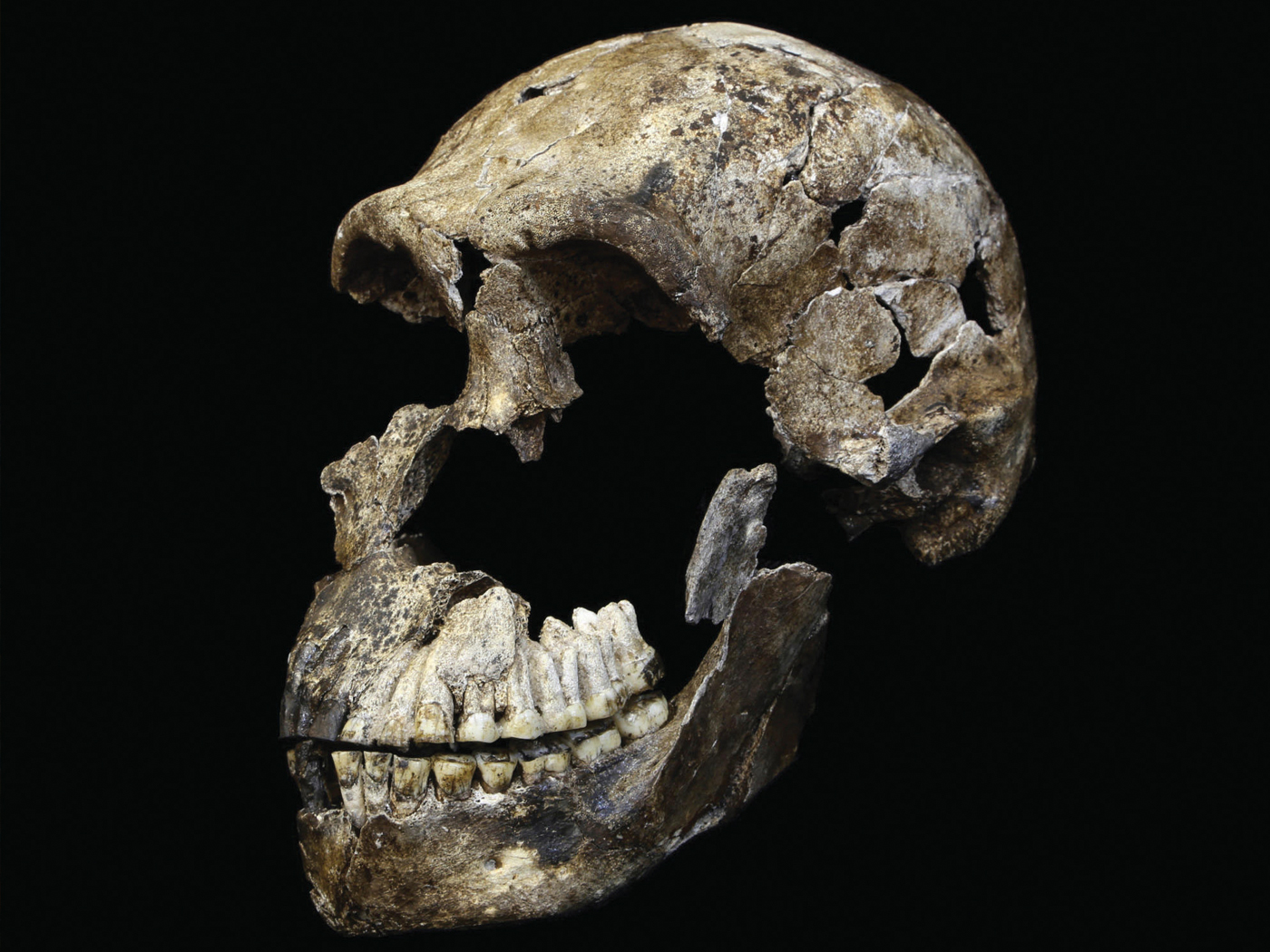Search Tools
New Defender's Study Bible Notes
8:1 a wind. The uniform temperatures of the pre-Flood would have prevented the great atmospheric circulations that now prevail, so that significant wind movements were impossible. With the almost complete precipitation of the waters in the primeval canopy after 150 days, the present latitudinal temperature differentials were soon functioning to initiate tremendous winds all over the earth. These winds, blowing on a shoreless ocean, would certainly generate gigantic surface waves and tidal surges. The latter, superimposed on all the other hydrodynamic and geophysical forces at work, evidently served as the critical factor to trigger great tectonic forces that eventually would restore at least partial equilibrium to the disturbed surface of the earth. The earth’s crust was in a highly unstable condition, with the tremendous subterranean reservoirs now emptied of their pressurized waters and with vast depths of light sediments piling up in the antediluvian sea basins.
8:1 assuaged. As a result of the water subsiding, the phenomena described in Psalm 104:6-9 began to take place. The earth’s crust collapsed deep into the previous subterranean reservoir chambers, forming the present ocean basins, and causing further extrusions of magmas around their peripheries and through openings in their floors. The light sediments in the sea troughs were forced upward by isostatic readjustment to form mountain ranges and plateaus. Thus the waters originally stored in the vapor canopy and the subterranean chambers are now stored mainly in the present ocean basins (these waters would be sufficient to cover a “smoothed” earth to a depth of almost two miles) after the vast topographic adjustments that terminated and followed the Flood.
8:3 continually. This expression, to some degree, suggests a cyclic tidal action, but especially connotes rapid subsidence and drainage. It is significant that all the world’s oceans bear evidence (e.g., sea mounts, submarine canyons, etc.) of former lower levels and that all the world’s continental drainage systems (rivers, lakes) bear evidence of former higher water levels and quantities of flow (e.g., old raised river terraces and lake beaches, vast alluvial valleys and “underfit” streams). These worldwide evidences clearly picture a world in the process of emerging from a recent global inundation.
8:4 seventeenth day of the month. This “resting” of the ark, after its labor of protecting its precious cargo against the terrible cataclysm for five long months, occurred exactly 150 days after the Flood began. It may be significant that, on the anniversary of this date many years later, Jesus Christ rose from the dead! That is, the seventh month of the civil year used by the Jews (almost certainly the calendar used in the Flood narrative) was later set as the first month of their religious year. The Passover was on the fourteenth day of the first month, and Christ rose three days after the Passover. Thus, He “rested” in Joseph’s tomb and then rose from the dead on the seventeenth day of the seventh month of the civil calendar.
8:4 mountains of Ararat. “Ararat” in the Bible is the same as “Armenia.” The “mountains of Ararat” could apply to the entire region; however, the present Mount Ararat, 17,000 feet high, is the only logical site for the ark to rest. The ark landed the very day the waters began to assuage, and it was another 2½ months until the tops of nearby mountains could even be seen. Furthermore, there have been many reported sightings of the ark, seemingly still preserved on an almost inaccessible ledge, most of the time encased in the stationary ice cap near its summit. Though none of these reports are sufficiently documented to constitute proof, the very number and variety of them is at least intriguing evidence that the ark has been divinely preserved, awaiting God’s timing for its confirmed discovery and manifestation. Mount Ararat is a volcanic mountain, formed evidently during the early months of the Flood year (there were no volcanoes before the Flood). There is also considerable geological evidence that it was further uplifted sometime after the Flood, so that it may well have been much lower and easier of access during the years immediately following the Flood. That even the summit of Ararat was at one time under water, however, is evident both from the marine fossils that have been found there and the extensive pillow lavas (lavas formed under high hydrostatic pressure) which exist there.
8:7 raven. The raven, a hardy flier and carrion eater, could survive indefinitely even before there was much dry land. The dove, however, required fresh plant material and dry ground.
8:10 other seven days. The frequent references to “seven days” in the Flood account, plus the fact that Noah left the ark 371 days (53 weeks) after entering it, indicates they were following a calendar based on seven-day weeks. Confined in the ark, the crew could not use the moon or stars for navigation or chronology, but could, of course, count days.
8:11 olive leaf. The olive tree is extremely hardy and can grow and thrive on almost barren rocky slopes. The fresh olive leaf plucked by the dove proved the land was beginning to produce a vegetal cover and so would soon be ready to support its human and animal residents again. Both seeds and cuttings from pre-Flood plants were abundant in the sediments of the Flood and could grow again as soon as adequate sunlight and dry land were available. Experiments have shown that seeds of a wide variety of plants will sprout even after many months of submergence in salt water. Actually the waters of the earth changed only gradually and slightly in salinity during the Flood, certainly not so much as to prevent the survival and multiplication of all kinds of plants and marine animals after the Flood.
8:17 multiply upon the earth. This is a repetition of the Edenic command to the created animal kinds (Genesis 1:20, 22). In order to do this, they must migrate from Ararat, each finding its proper ecological niche in the drastically changed and widely varied environments of the post-diluvian world. During the Ice Age following the Flood, land bridges existed across the Bering Strait from Siberia to Alaska and down the Malaysian Strait into New Guinea, facilitating such migrations. Also, Noah’s descendants certainly knew how to build and use boats, and some of the animals may well have been transported in this way, as well as on rafts of vegetation transported out to sea during river floods.
8:19 out of the ark. Here it is again asserted, as clearly as could be expressed, that all the present land animals in the earth have descended from those on the ark.
8:20 offered burnt offerings. Noah thus sacrificed what amounted to one-seventh of his flocks and herds of domestic animals, a real act of thanksgiving and faith on his part. The world was far more forbidding in aspect than when they had entered the ark: rugged and desolate, cold and stormy, barren and silent. It had been purged and cleansed of its wicked and violent inhabitants, however, and God had preserved His remnant through the awful cataclysm, so this was a service of both great praise and earnest petition.
8:21 not again curse. The promise of God, given in response to Noah’s sacrificial prayer of thanksgiving and intercession, is tremendous in scope. He would never again “curse the ground” with a worldwide curse as He had done following Adam’s sin. The Edenic curse is still in effect, of course, but there would be no other. Noah had, indeed, brought “comfort” to the world concerning “the ground which the LORD had cursed” (Genesis 5:29).
8:21 every living thing. Neither would God ever again bring a worldwide cataclysm to the earth as He had with the Flood.
8:22 remaineth. This dual promise would be kept as long as the earth existed in its probationary state, with man still in his sinful condition, his “heart evil from his youth.” Eventually, the earth would be renovated and the curse removed altogether (Revelation 22:3).
8:22 shall not cease. The principle of uniformity is here established by God for the post-Flood world. Not only would the basic laws of nature still continue in effect (these had, of course, operated even during the Flood) but also the regular operation of its natural processes (these had been greatly intensified during the Flood). The basic processes of earth are its rotation on its axis and its orbital revolution around the sun. These control all annual and diurnal processes, which in turn control practically all biological and geological processes. Absolute uniformity of the day/night cycle and the seasonal cycles assures at least general uniformity of functioning (allowing for statistical variations about an average) of other processes. Thus the principle of uniformitarianism is valid absolutely for the laws of nature ever since the imposition of God’s curse (except for special miracles) and is valid statistically for the processes of nature since the flood.









